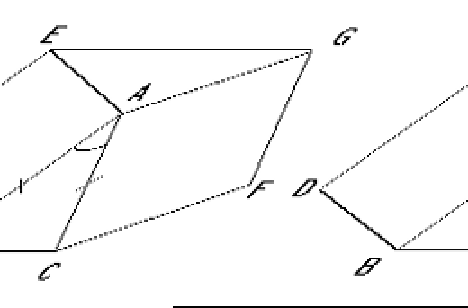Information Technology Reference
In-Depth Information
3.2.2 Networks of computational objects
In many problems we usually meet many different kinds of objects. Each object has
attributes and internal relations between them. Therefore, it is necessary to consider an
extension of computational nets in which each variable is a computational object.
Definition 3.6:
A computational object (or Com-object) has the following characteristics:
1.
It has valued attributes. The set consists of all attributes of the object O will be denoted
by M(O).
2.
There are internal computational relations between attributes of a Com-object O. These
are manifested in the following features of the object:
-
Given a subset A of M(O). The object O can show us the attributes that can be
determined from A.
-
The object O will give the value of an attribute.
-
It can also show the internal process of determining the attributes.
Example 3.1: A triangle with some knowledge (formulas, theorems, etc ...) is an object. The
attributes of a “triangle” object are 3 edges, 3 angles, etc. A “triangle” object can also answer
some questions such as “Is there a solution for the problem that to compute the surface from
one edge and two angles?”.
Definition 3.7:
A computational relation f between attributes or objects is called a
relation
between the objects
. A network of Com-objects will consists of a set of Com-objects O = O
1
,
O
2
, ..., O
n
and a set of computational relations F = f
1
, f
2
, ... , f
m
. This network of Com-
objects is denoted by (O, F).
On the network of Com-objects (O, F), we consider the problem that to determine (or
compute) attributes in set G from given attributes in set H. The problem will be denoted by
HG.
Example 3.2: In figure 2 below, suppose that AB = AC, the values of the angle A and the
edge BC are given (hypothesis). ABDE and ACFG are squares. Compute EG.
Fig. 2. A problem in geometry


